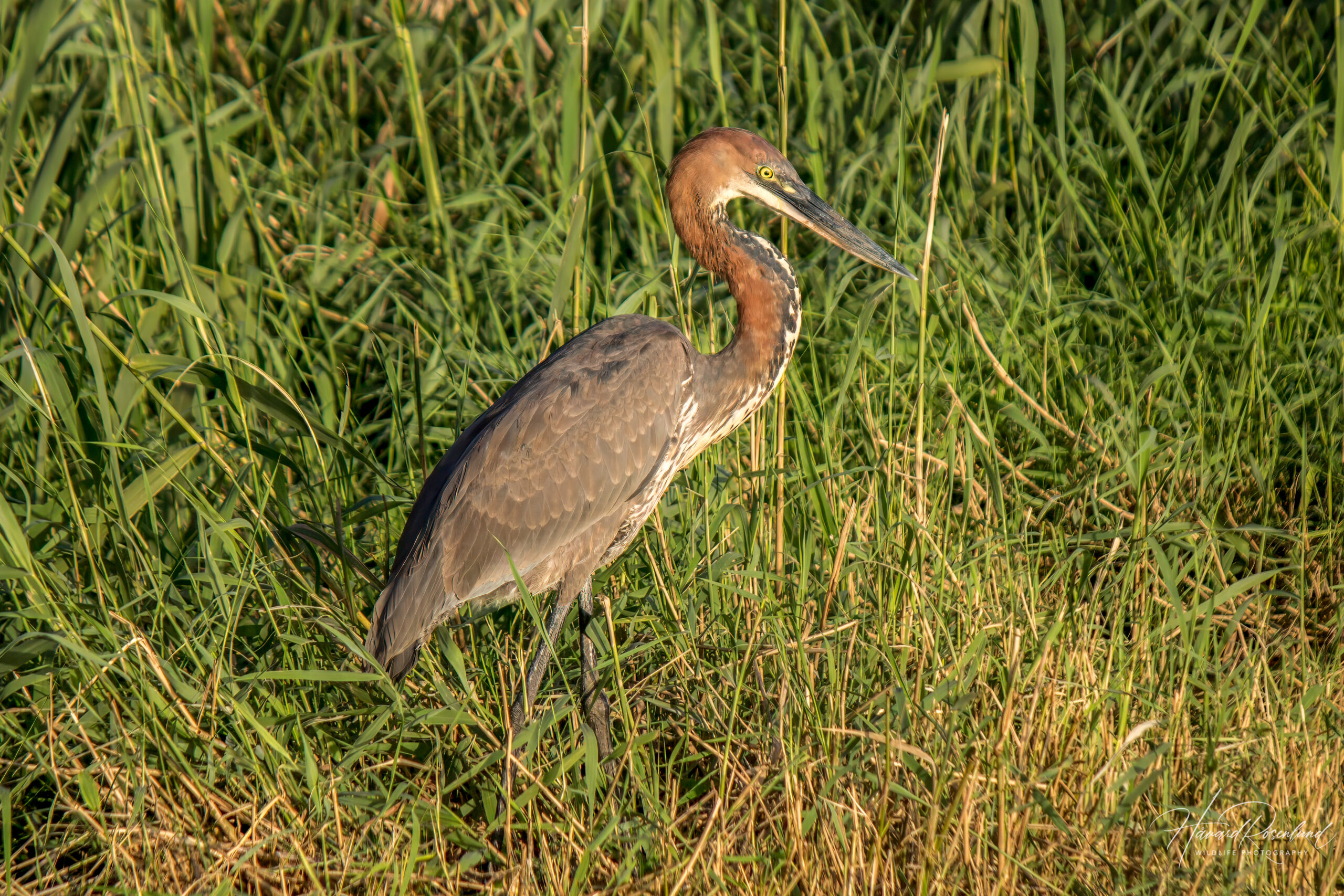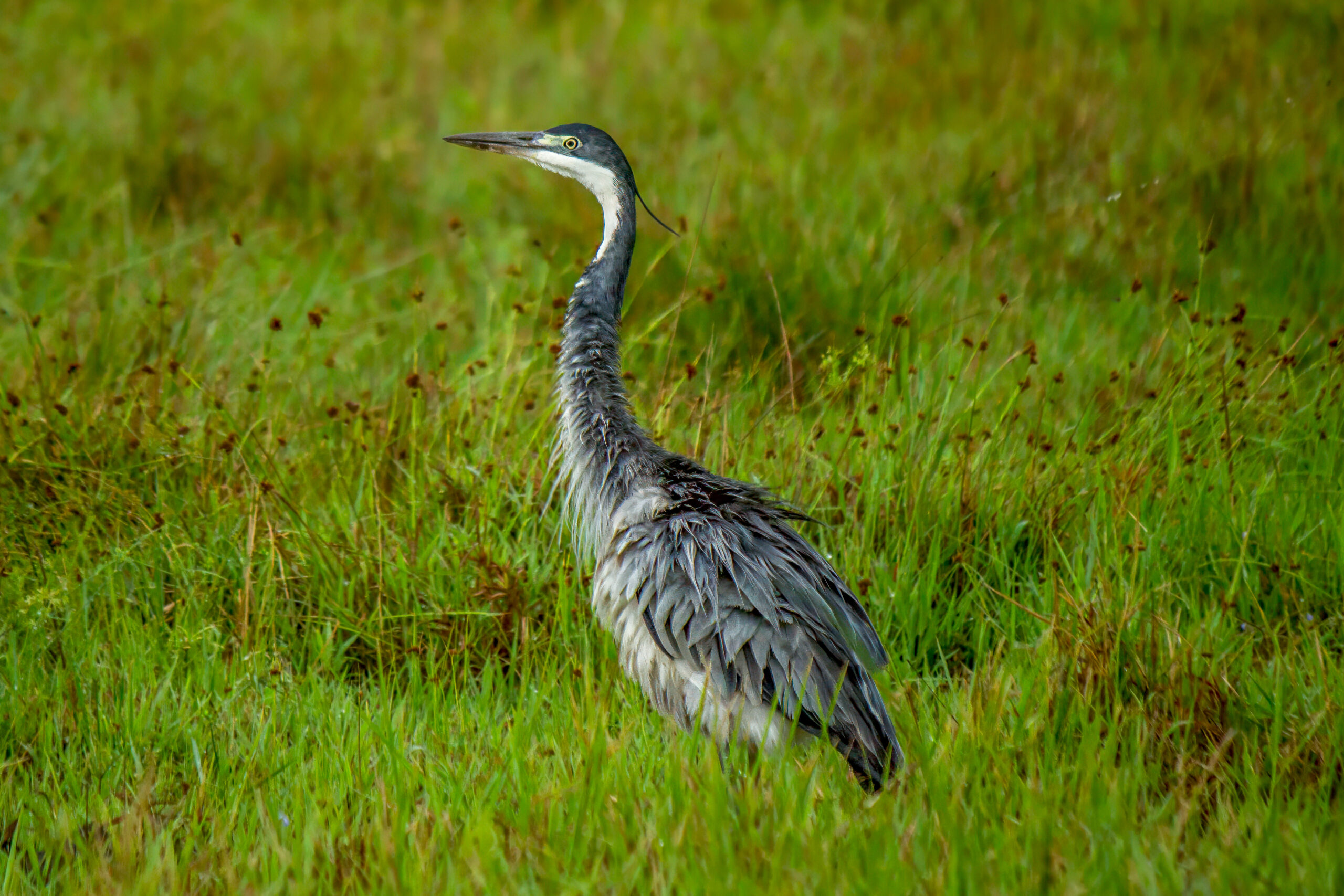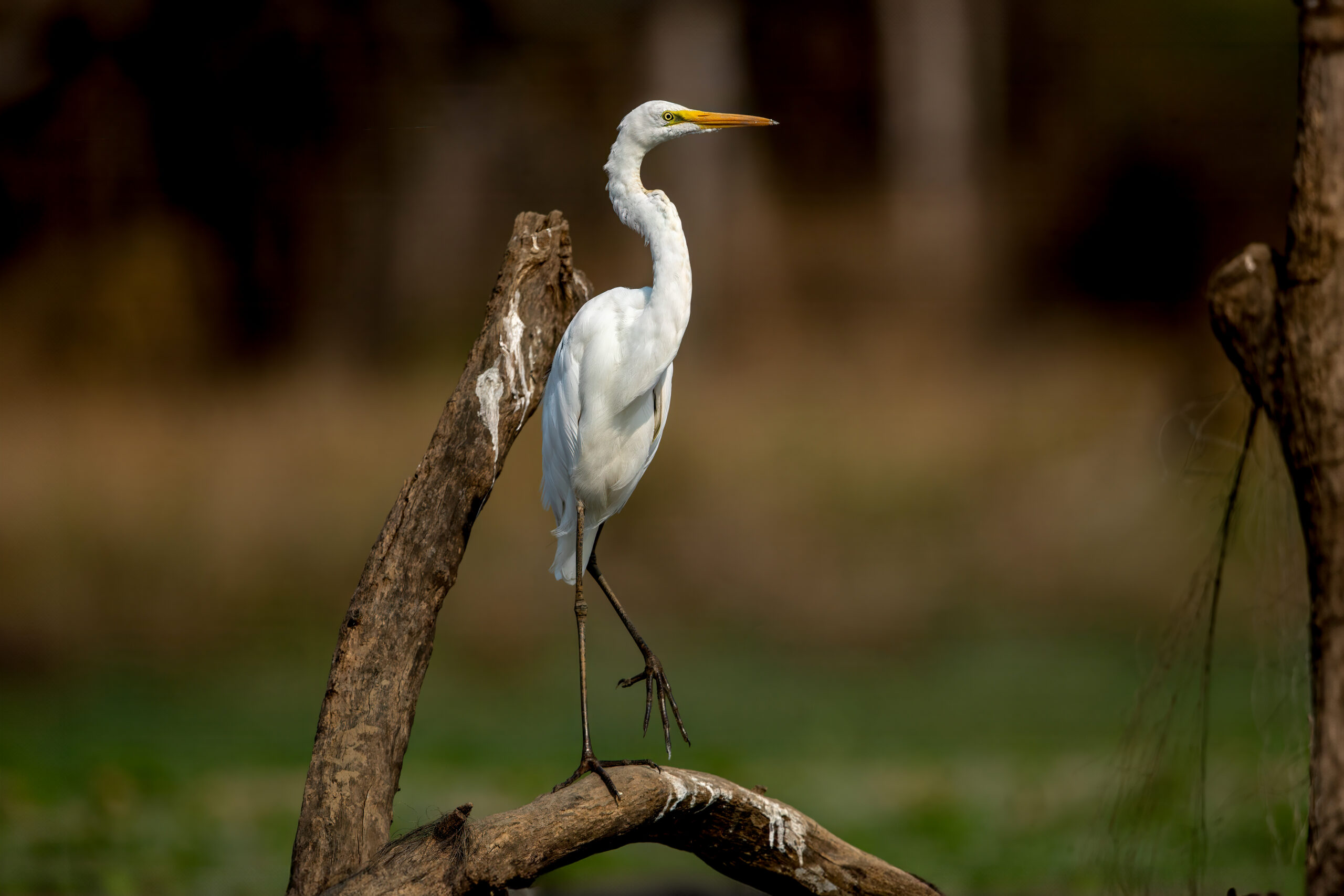Description
The goliath heron (Ardea goliath), also known as the giant heron, is the largest of all heron species. It reaches a height of 135-150 cm (4 ft 5 in – 4 ft 11 in) and a wingspan of 210-230 cm (6 ft 11 in – 7 ft 7 in). It is found mainly in Sub-Saharan Africa, where the range is extensive, but populations also exist on the southwestern edge of the Arabian Peninsula, coastal Iraq, southern Iran, and parts of eastern India and Bangladesh. It is easily distinguishable from other large herons, which it often shares habitat with. It has a very large bill. Head, neck and underparts are rufous to chestnut. Foreneck and breast is streaked black and white. Backside and wings are grey. Sexes look alike, but females are typically smaller.
Diet & habitat
The goliath heron is one of the most aquatic species of heron, as it rarely ventures far from water. It even prefers to fly over or alongside water. It can be found near any type of water habitat, both freshwater and saltwater. Surrounding habitat can be both open landscapes and dense forests. It prefers habitats less disturbed by humans. Goliath herons are often seen standing or slowly walking alone in the shallows as they look for prey. Typical prey are large fish, but is also eat frogs, lizards, snakes, rodents, and crabs. It will also feed on carrion.
Nesting
Goliath herons are very territorial, and rarely allow other individuals into their territory. More than one goliath heron is typically only observed if it is a breeding pair or if there are immature birds present. Breeding season is mainly during rainy season, but it can breed throughout the year in some areas. It may not breed every year, depending on conditions. It is predominantly a solitary breeder, but can in some areas breed in smaller colonies, as well as in colonies with other species of bird. Islands are often chosen as nest sites. Nests are large platforms of twigs and reeds, typically placed in trees, in bushes, or in reedbeds. The female lays 2-5 eggs, which are incubated by both sexes for 24-30 days. Both parents tend to the young, who fledge after somewhere between 40-80 days. Typically, only one or two of the chicks fledge.
Status
The goliath heron has a large distribution in Africa, and is very common in parts of its range, such as East Africa, and rarer in other parts, such as West Africa. Numbers have increased in South Africa due to the creation of dams and reservoirs. May not be breeding in Iran, India, and Bangladesh. Overall, the population is considered stable and it is listed as least concern on the IUCN Red List.








